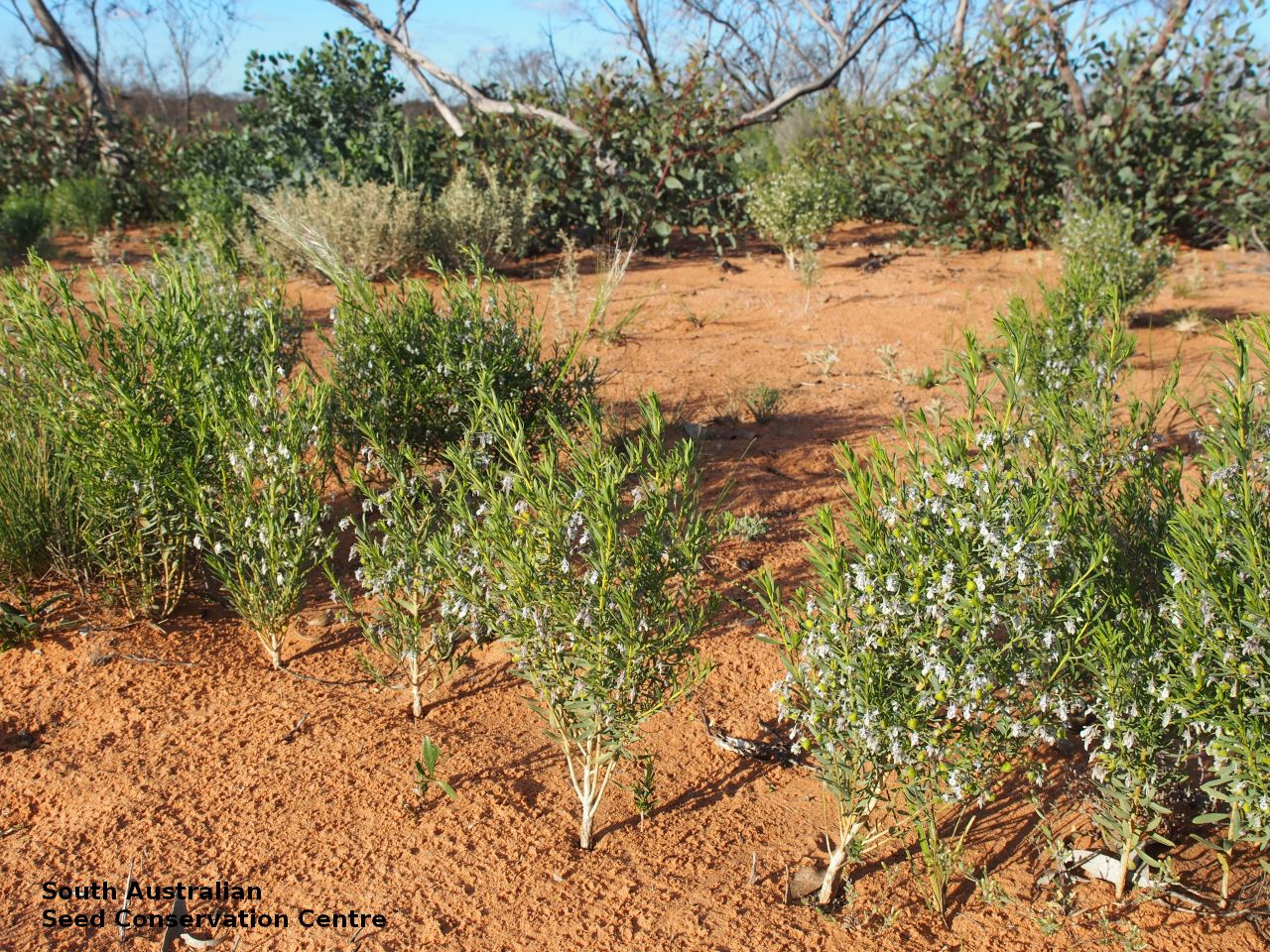
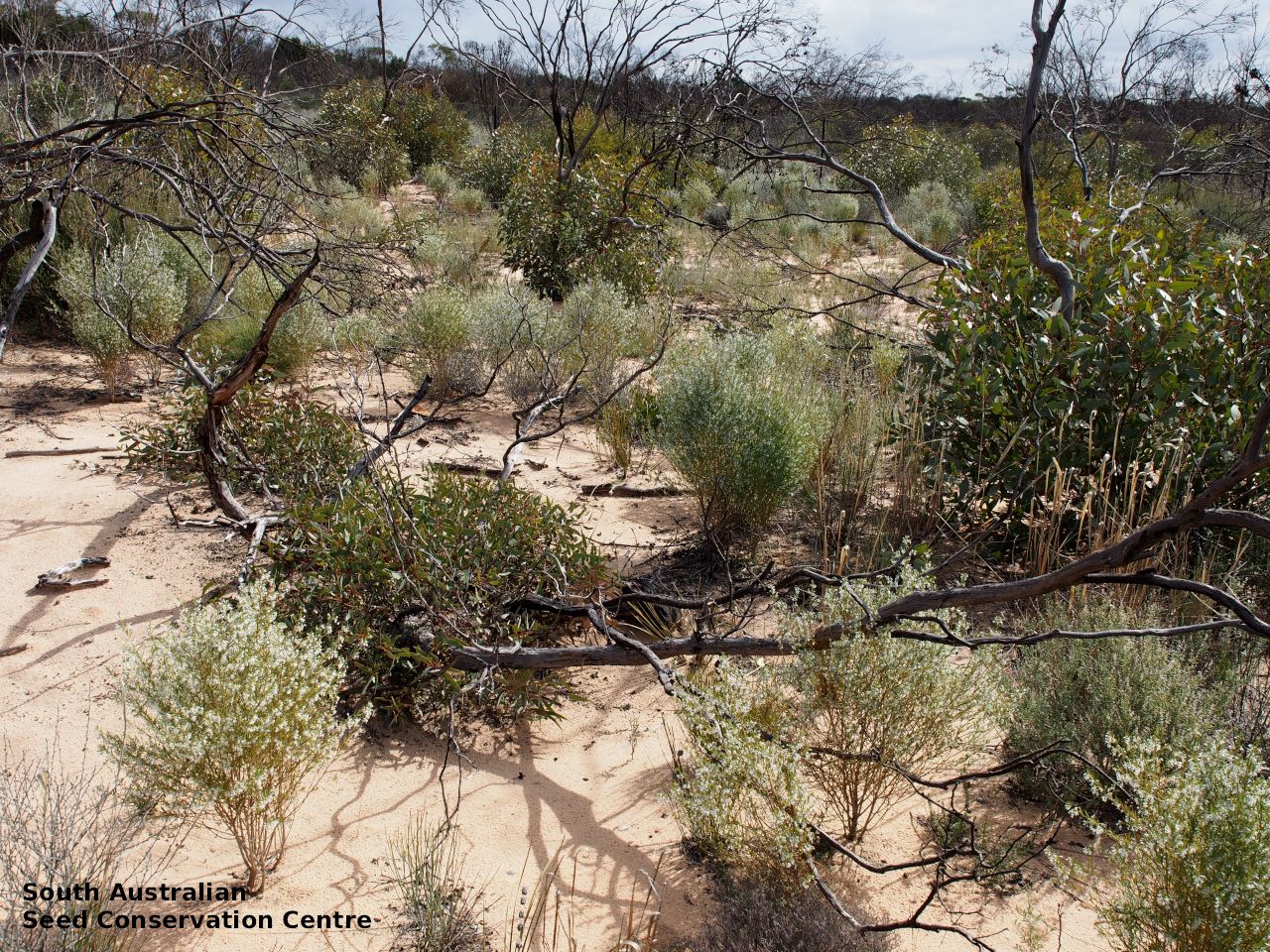
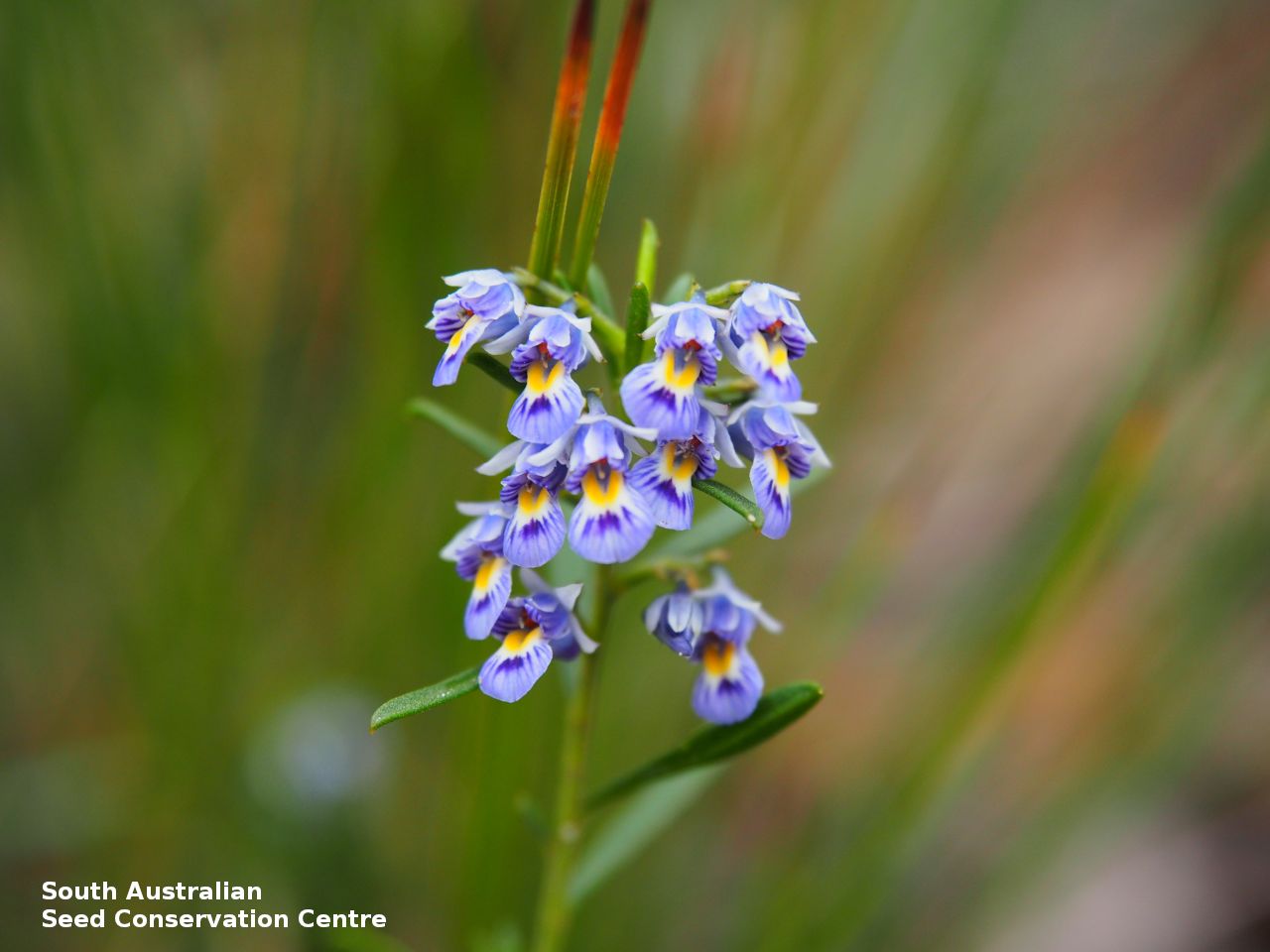
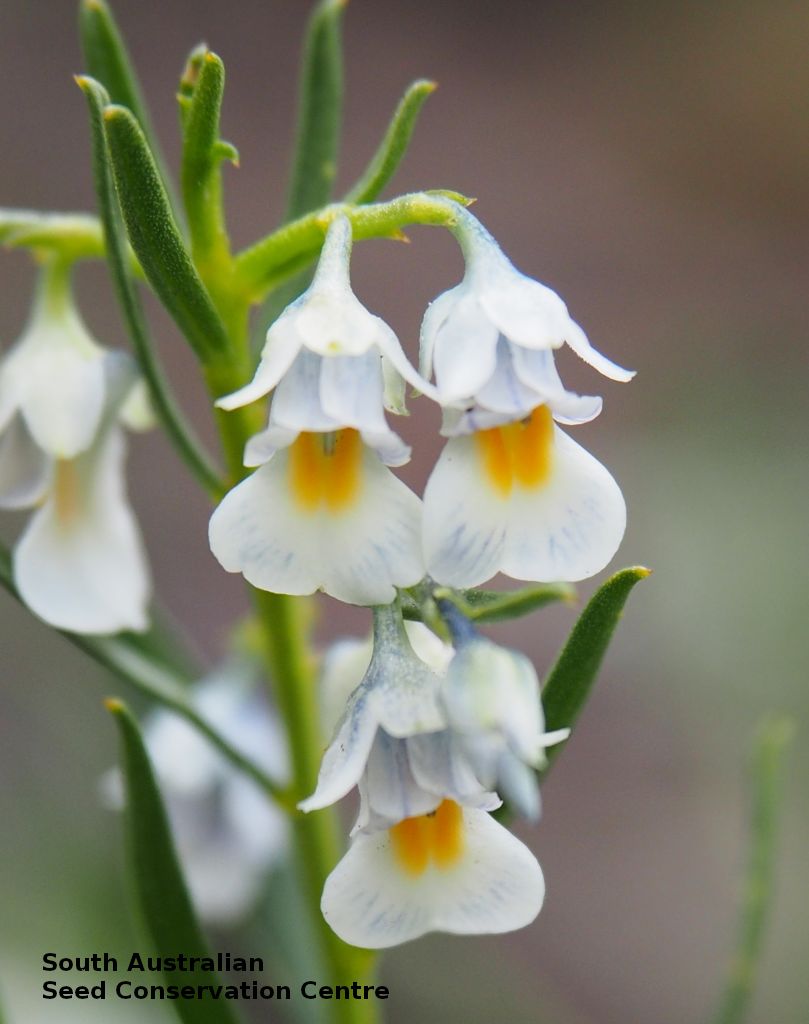
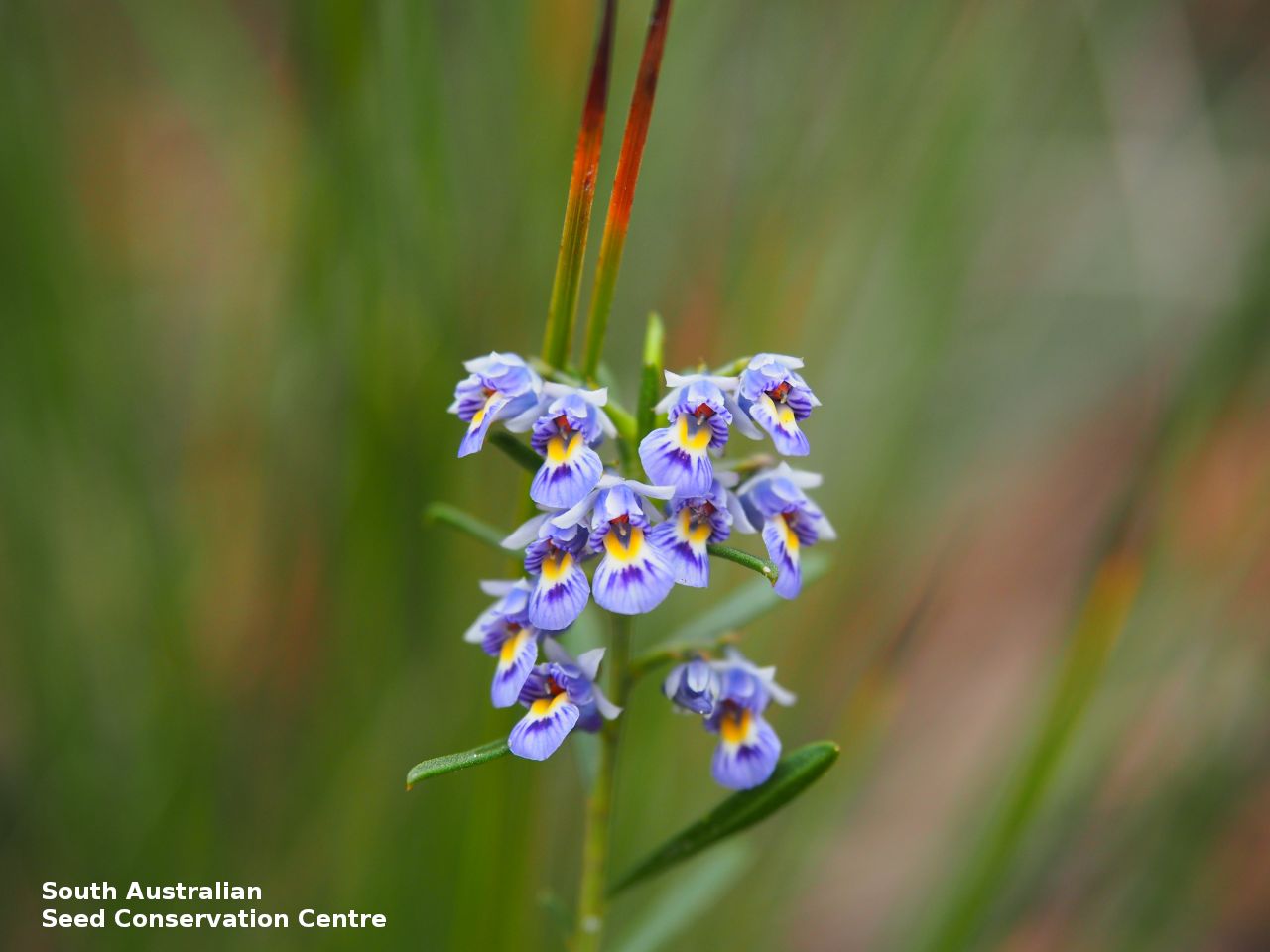
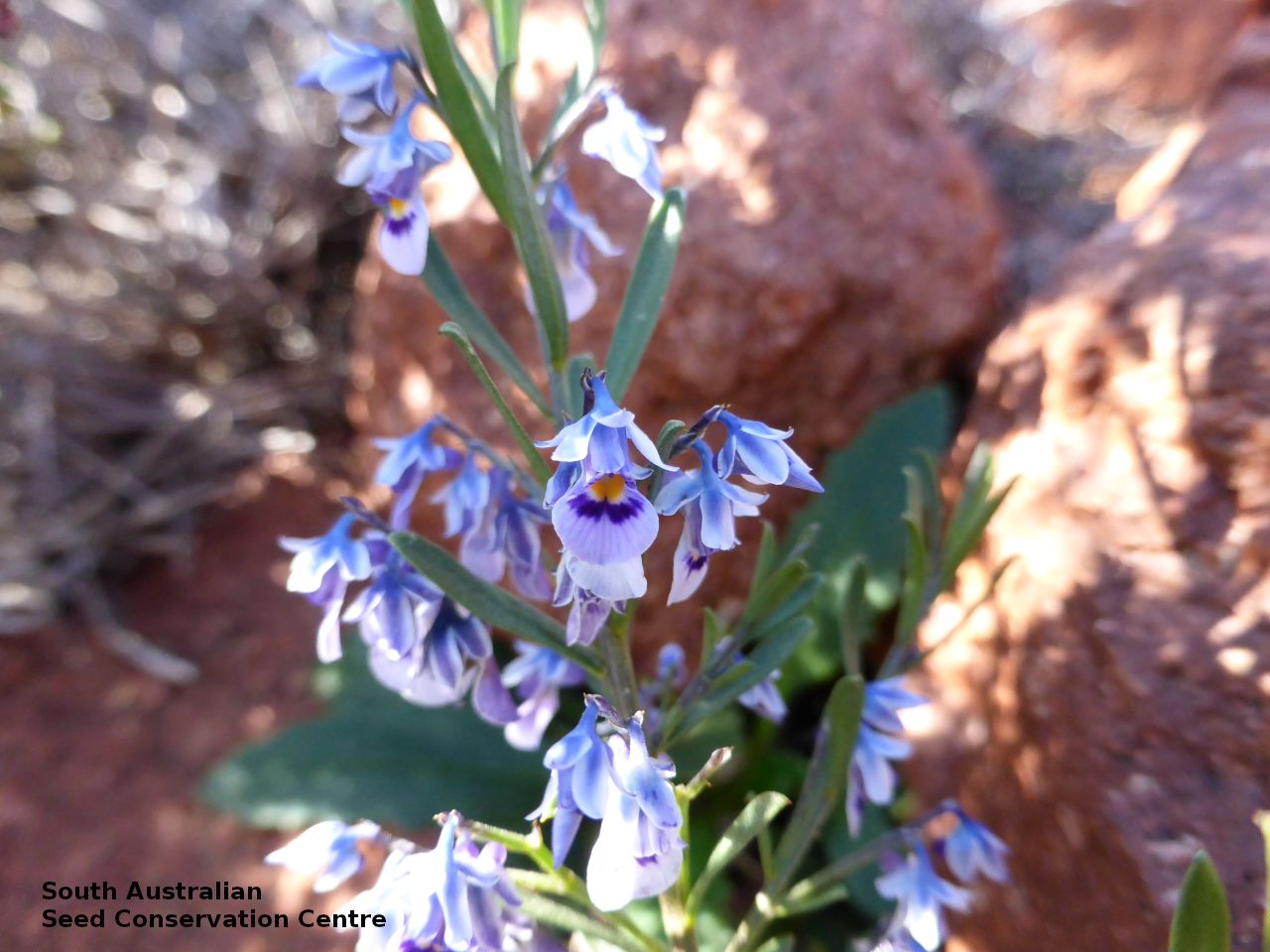
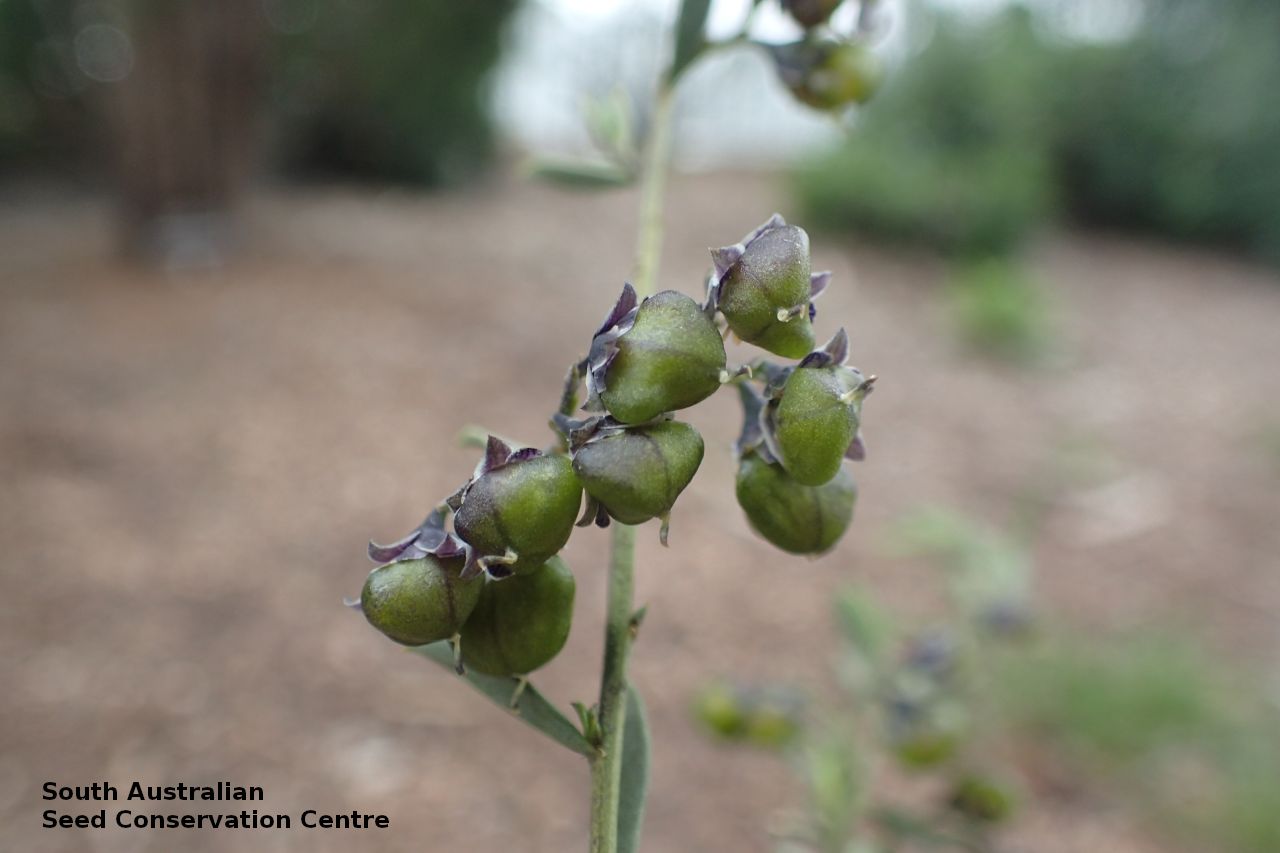
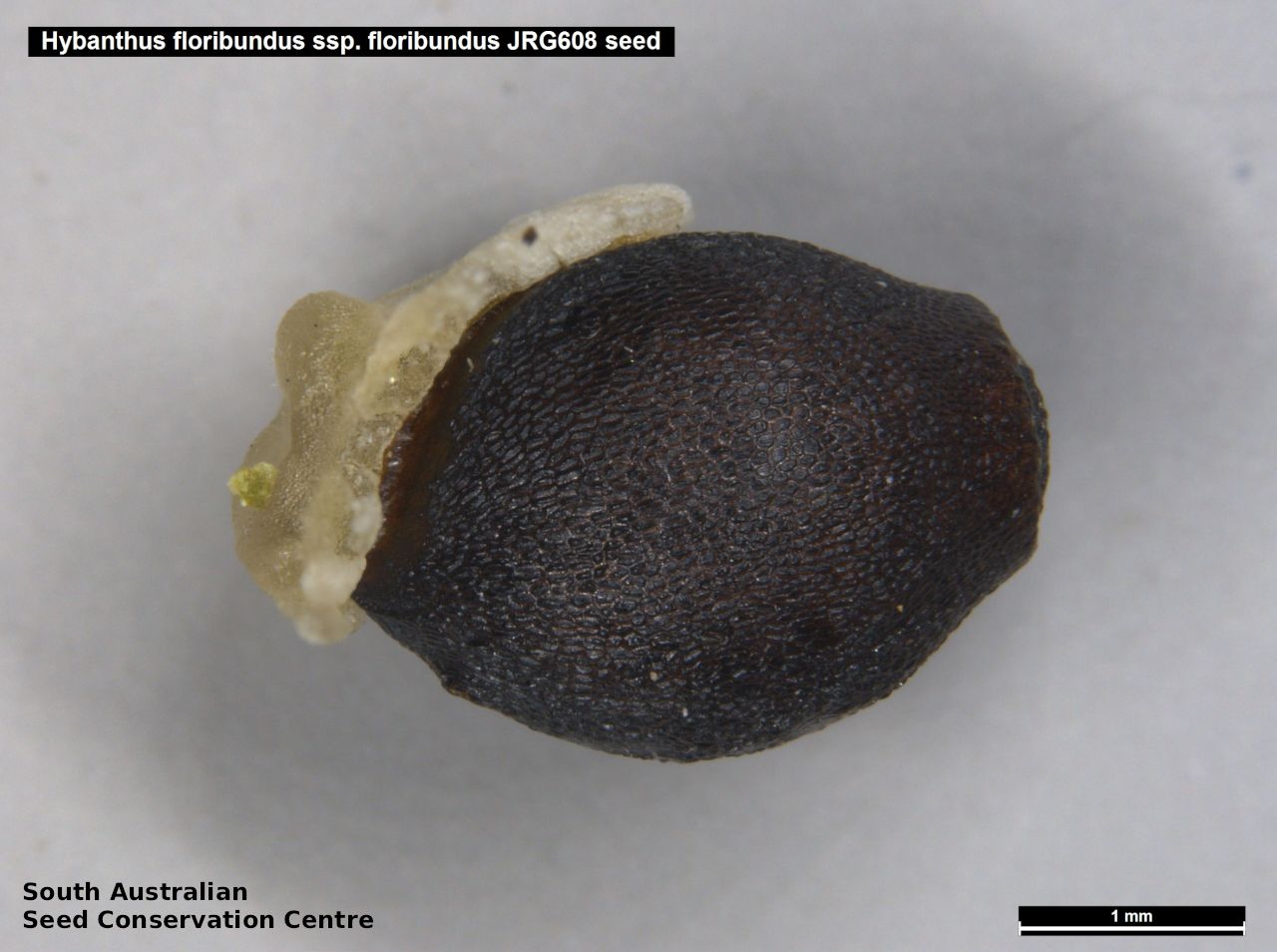
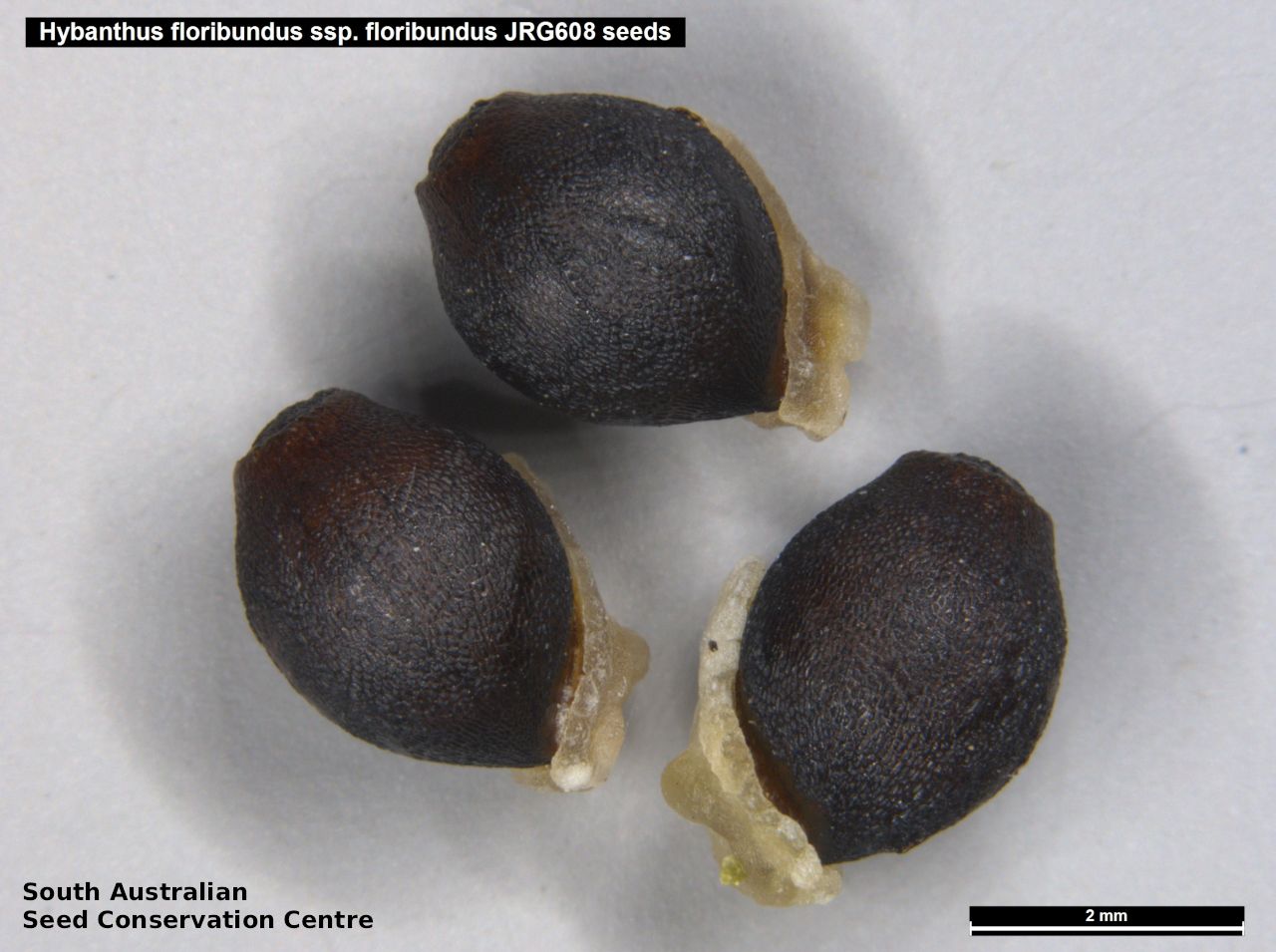
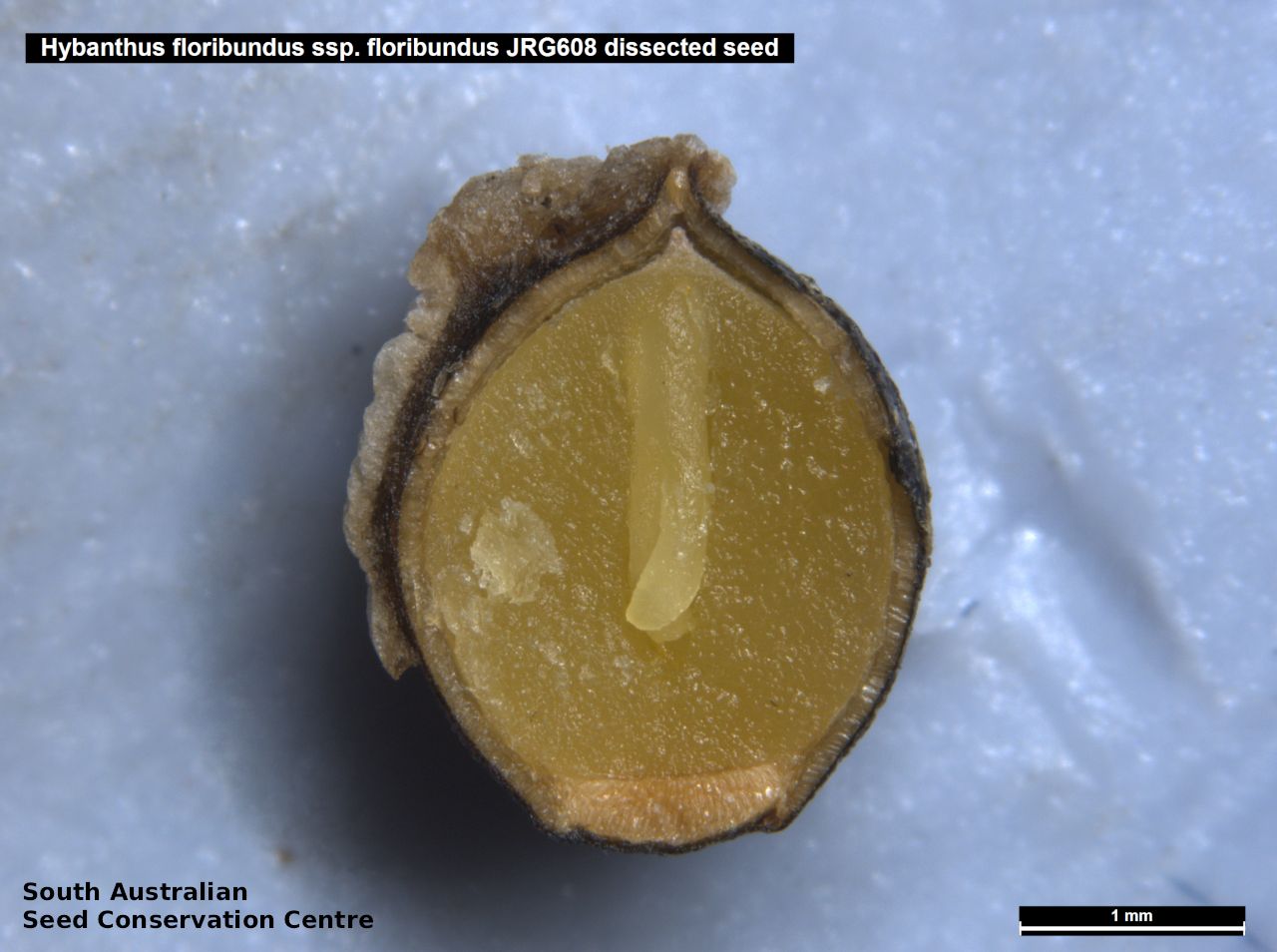
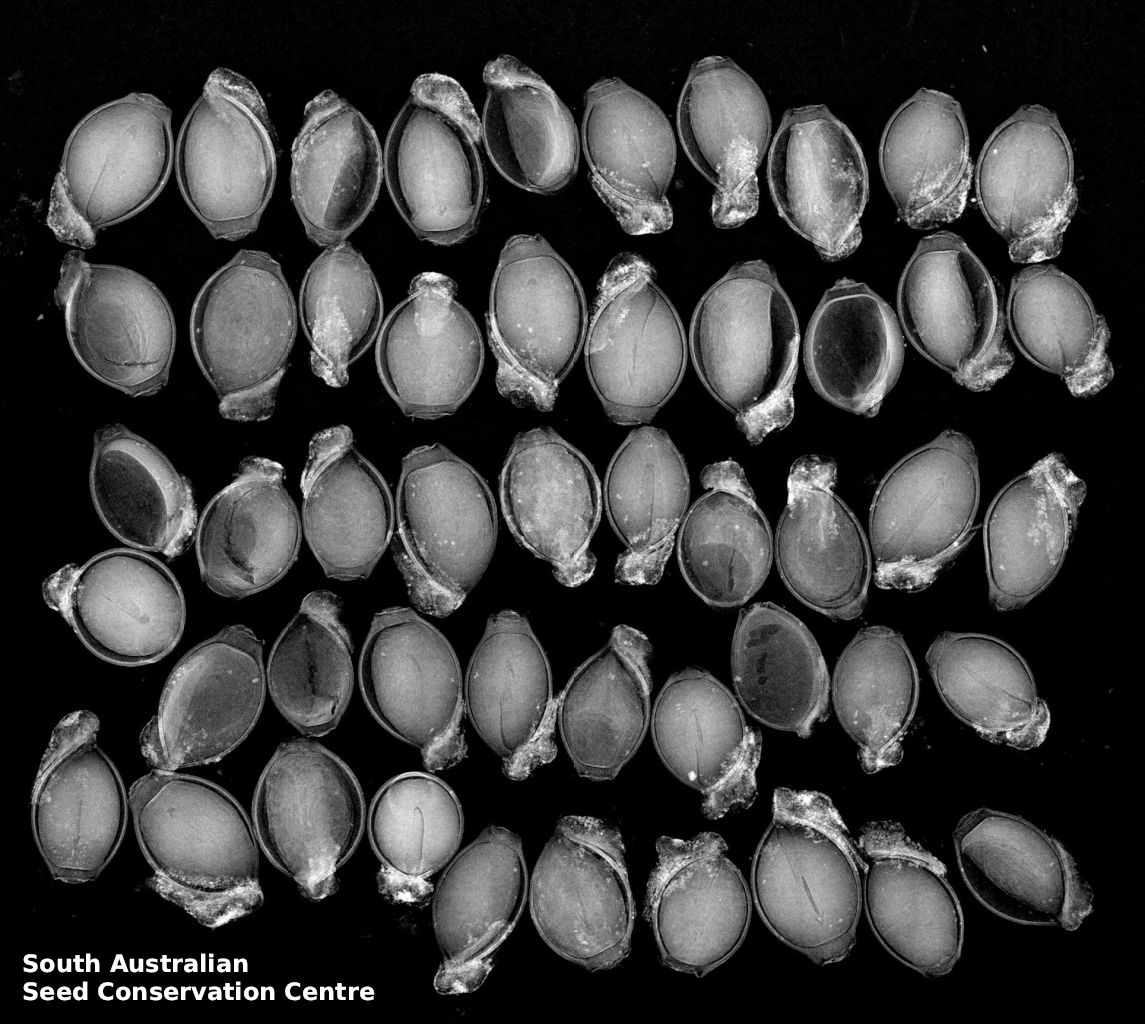
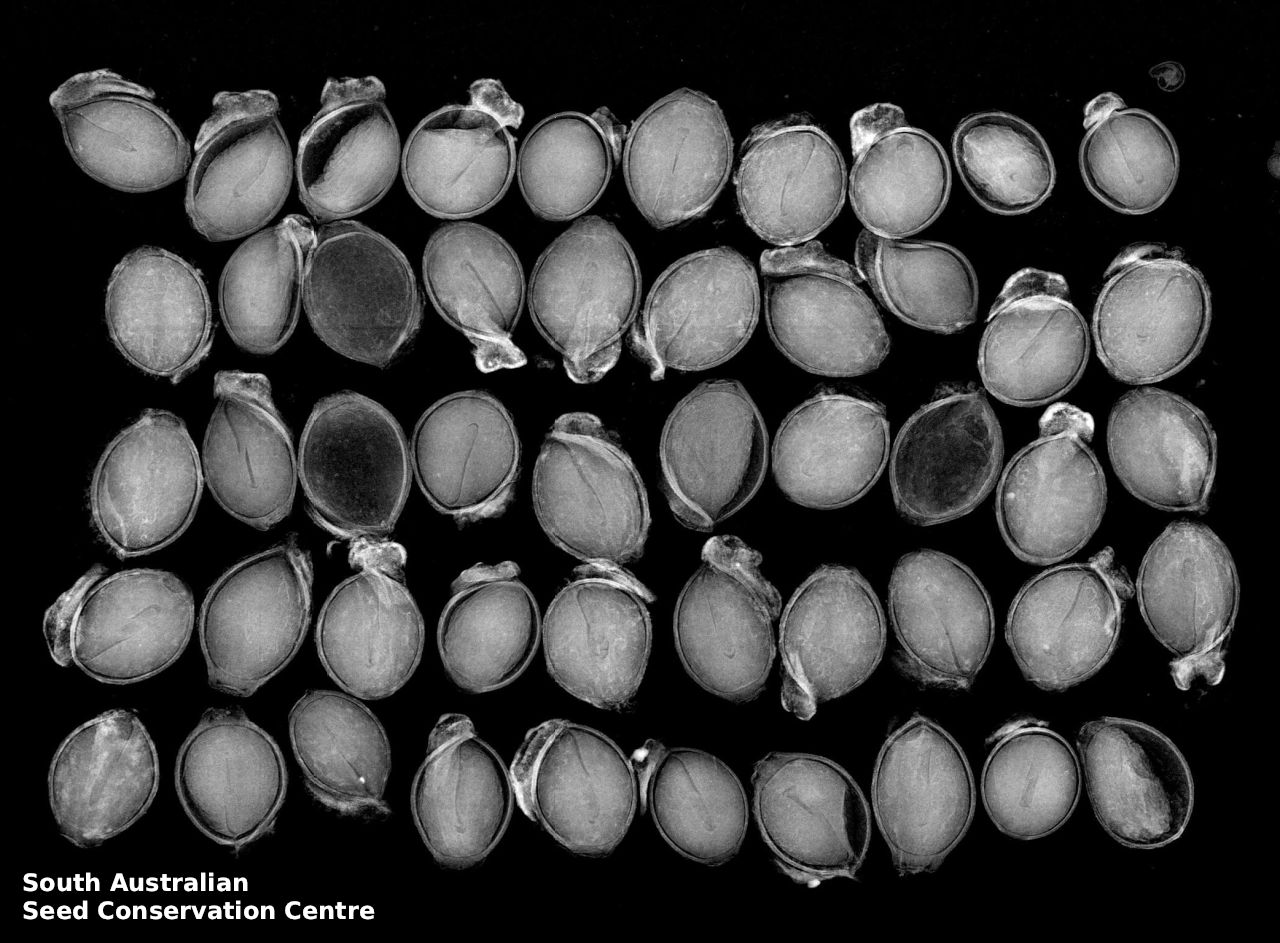
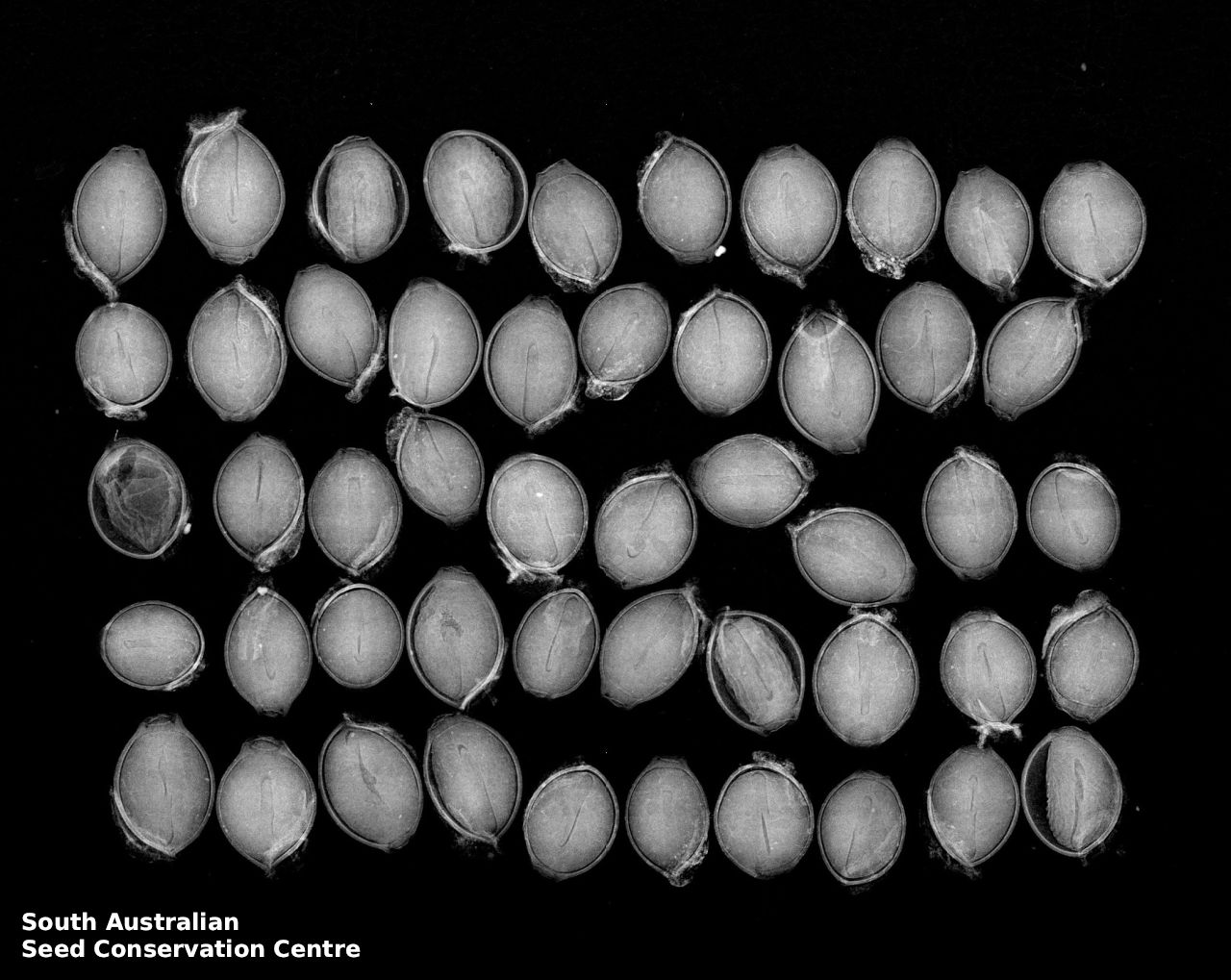

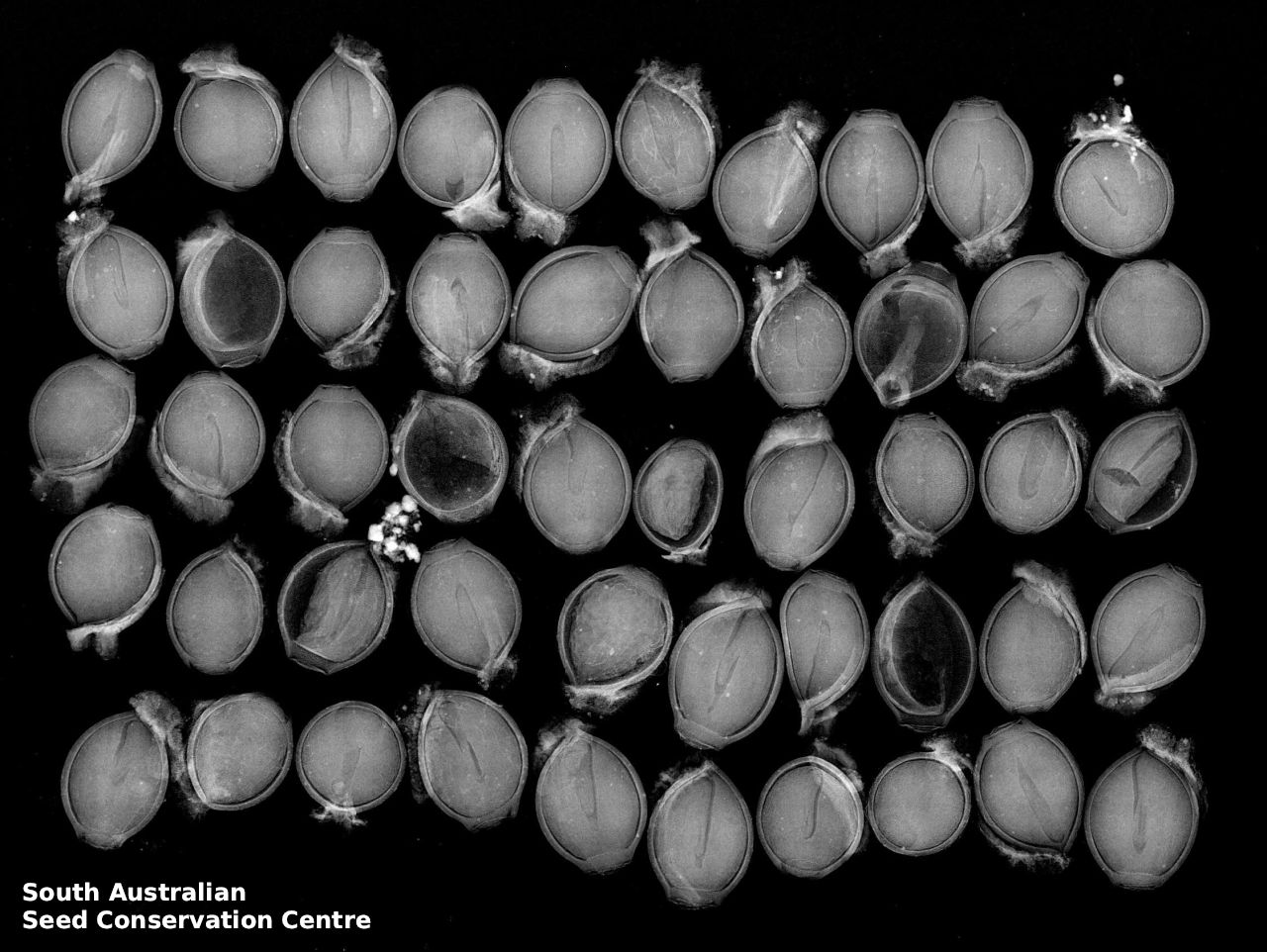
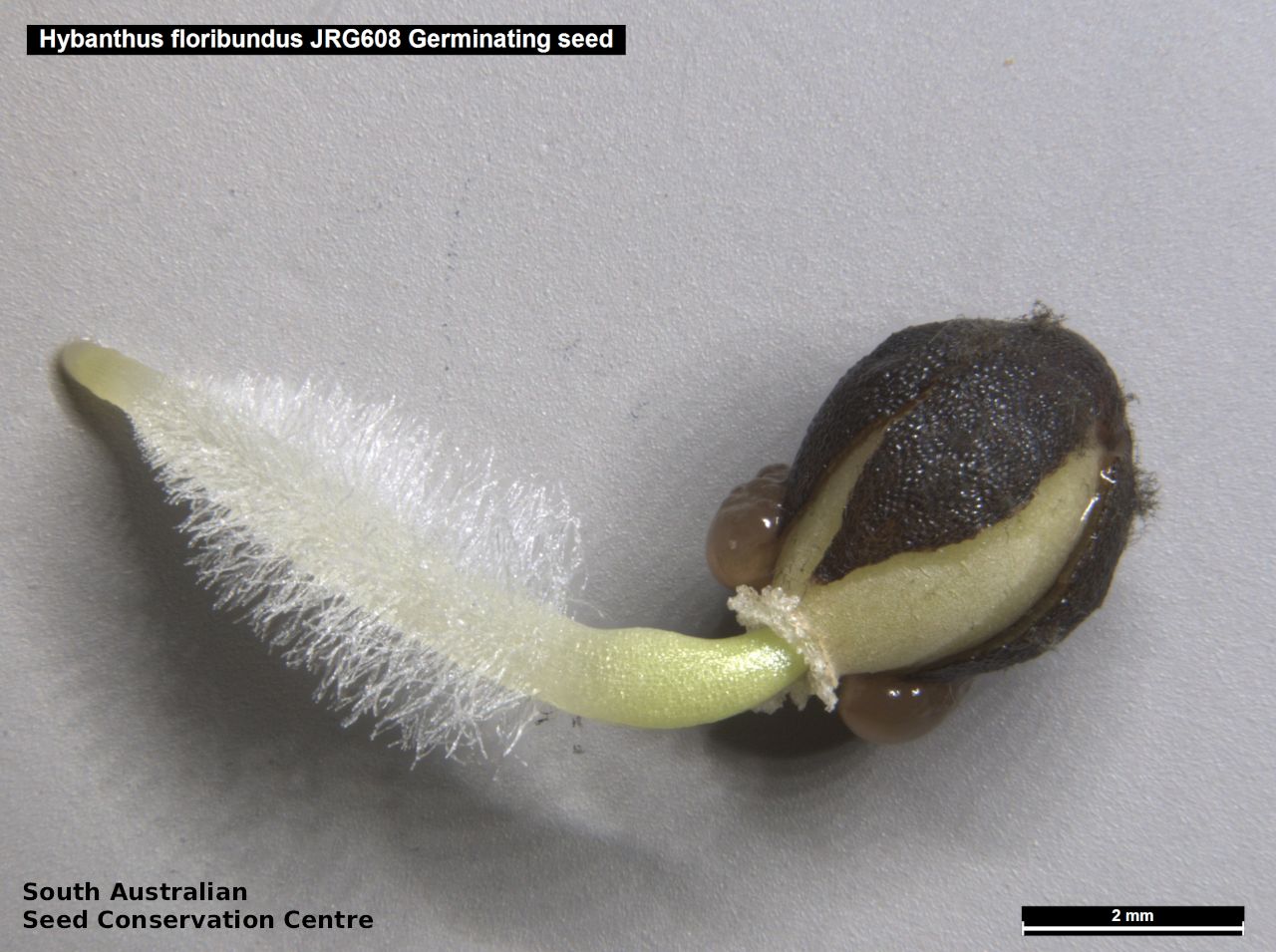
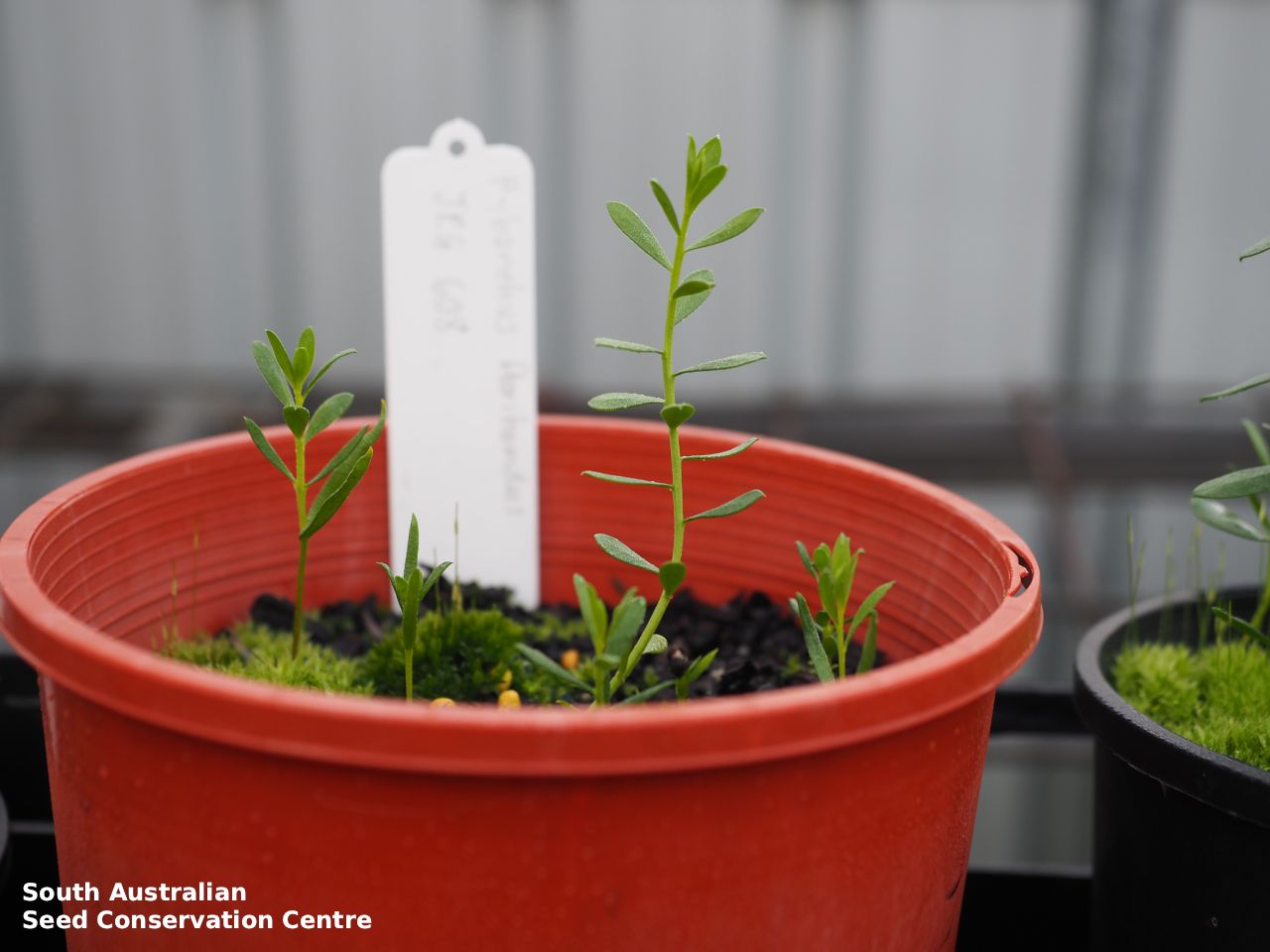

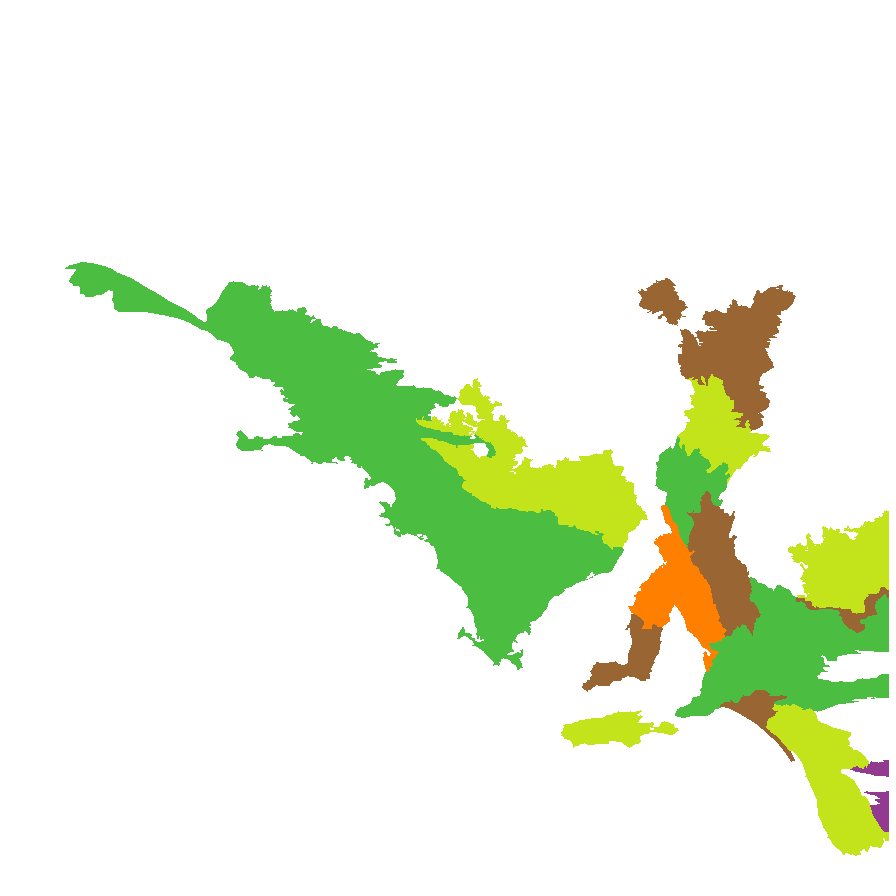
Botanical art
Prior names
Hybanthus floribundus
Ionidium australasiae
Pigea floribunda
Ionidium floribundum
Clelandia convallis
Common names
Shrub Violet
Etymology
Hybanthus, from the Greek 'hybos', meaning hump and 'anthos', meaning flower, referring to the spurred or pouched anterior petal. Floribundus from the Latin 'flos' , meaning flower and '-abundus', meaning abundant, alluding to the species' profuse flowering.
Distribution and status
Found in the southern part of South Australia growing in a range of habitats. Also found in Western Australia, New South Wales and Victoria. Native. Common in South Australia. Common in the other States.
Herbarium regions: Flinders Ranges, Eyre Peninsula, Northern Lofty, Murray, Yorke Peninsula, Southern Lofty, Kangaroo Island, South Eastern, Green Adelaide
AVH map: SA distribution map (external link)
Plant description
Smooth perennial shrub to 1.5 m tall. Leaves alternate; linear, lanceolate or oblong, to 35 mm long and 7 mm wide; acute or obtuse, more or less recurved; stipules linear to 1.5 mm long, glabrous. Inflorescence axillary along a short spike with pale-blue to white or dark-blue to green flowers. Flowering between May and October. Fruits are pale-green capsule to 8 mm long, with numerous seeds. Seeds are dark-brown to black ovoid seed 2-3 mm long with a white aril. Seed embryo type is spathulate
Seed collection and propagation
Collect seeds between July and December. Collect capsules that are maturing, drying and turning pale green with dark seeds inside. Keep an eye on the capsules, as they can ripen and split open quickly. Place the capsules in a tray and cover with paper to prevent seeds popping out and leave to dry for a week. Then rub the capsules gently with your hands to dislodge the seeds. Use a sieve to separate the unwanted material. Store the seeds with a desiccant such as dried silica beads or dry rice, in an air tight container in a cool and dry place.
The collections and germination research being undertaken on this species is supported by the Murray Mallee Local Action Planning Association (MMLAP) and the East Murray Area School. www.malleefutures.org.au
The SA Seed Conservation Centre recently collected 8,000+ seeds for this species for upcoming germination research in early 2018. Plants propagated from this research will be utilised in local projects, included a Seed Production Area in the region and a germination protocol will be made available on this webpage.
| Location | No. of seeds (weight grams) | Number of plants | Date collected | Collection number Collection location | Date stored | % Viability | Storage temperature |
|---|---|---|---|---|---|---|---|
| BGA | 10,200 (73.33 g) | 50 | 7-Nov-2017 | JRG608 Murray | 24-Apr-2019 | 84% | -18°C, -80°C |
Number of plants: This is the number of plants from which the seeds were collected.
Collection location: The Herbarium of South Australia's region name.
% Viability: Percentage of filled healthy seeds determined by a cut test or x-ray.